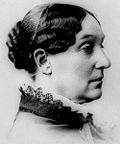- Vote-by-mail in Oregon
-
The U.S. state of Oregon established vote-by-mail as the standard mechanism for voting with Ballot Measure 60, a citizen's initiative, in 1998. The measure made Oregon the first state in the United States to conduct its elections exclusively by mail. The measure passed on November 3, 1998, by a margin of 69.4% to 30.6%.[1]
Contents
History of postal voting in Oregon
Vote-by-mail had already been implemented to a lesser degree in Oregon:
- 1981 The Oregon Legislative Assembly approves vote-by-mail for local elections, at the discretion of the county; at least one polling place in the county had to remain open on election day.[2]
- 1987 Vote-by-mail becomes permanent, with the majority of Oregon's counties making use of it.
- 1989 A House bill to extend vote-by-mail to include the 1990 primary elections was defeated in a 33–27, non-party-line vote.[2]
- 1992 Governor's Task Force on Local Government Services identifies statewide vote-by-mail as one of the most significant opportunities to save money on conducting elections.[3]
- 1995 Oregon becomes the first state to conduct a federal primary election totally by mail.
- 1996 U.S Senator Ron Wyden is elected by mail with a 66% turnout, succeeding Bob Packwood.
- 1998 Oregonians confirm their overwhelming support for vote-by-mail by passing Measure 60.
- 2000 Oregon becomes the first state in the nation to conduct a presidential election entirely by mail. About 80% of registered voters participated.
Measure 60 eliminated restrictions on vote-by-mail and established it as the single form of voting for elections in Oregon. It also required vote-by-mail to be used for biennial primaries and general elections as well as eliminating polling places.
Supporters
Organizations which supported the initiative included the League of Women Voters of Oregon, the Oregon League of Conservation Voters, AARP of Oregon, and Oregon Education Association. Individuals which supported the measure included then-Governor John Kitzhaber, Oregon Secretary of State Phil Keisling, and former U.S. Senator Mark Hatfield. Supporters of the measure asserted that it would increase voter participation and make elections more convenient for voters. The State of Oregon would also save an estimated $3 million dollars a year, in years which a primary and general election occur.[4]
Opponents
Notable opposition to the measure included State Representative Lynn Snodgrass and anti-tax activist Bill Sizemore. Opponents claimed the system would invite election fraud as well as the possibility of people pressuring each other in terms of how they vote.[4] Sizemore stated in an online column in April 2003 that the vote-by-mail system "is a formula for election fraud."[5] He also stated that, "Vote by mail is a system designed for honest people. It is predicated on the notion that people are basically good and won’t cheat."
Lasting popularity
Vote-by-mail in Oregon has maintained a high level of support since it was passed in 1998. A survey done in 2003 by Dr. Priscilla Southwell, a professor of Political Science at University of Oregon, shows that 81% of respondents favored the vote-by-mail system. 19% favored voting at the polls. The poll also shows high favorability among both registered Democrats (85%) and Republicans (76%). 30% of respondents said they voted more often since vote-by-mail was enacted.[6]
See also
References
- ^ Official Results, 1998 General Election: State Measure 60
- ^ a b Ota, Alan K. (March 22, 1989). "House kills vote-by-mail for primary". The Oregonian.
- ^ Hortsch, Dan (August 5, 1992). "Panel sees major savings if vote-by-mail is extended". The Oregonian.
- ^ a b Voter's guide for Measure 60 Includes text of measure, explanatory statement and arguments for and against.
- ^ Bill Sizemore - 'Vote By Mail' A Formula For Fraud
- ^ Southwell, Priscilla L.. "Vote by Mail: Voter Preferences and Self-Reported Voting Behavior". http://www.allacademic.com/meta/p_mla_apa_research_citation/0/6/0/7/3/p60739_index.html.
Topics in Oregon legislation Crime and sentencing Capital punishment · Measure 11 (1994) (mandatory minimum sentencing) · Measure 40 (1996) etc. (victims' rights) Abigail Scott Duniway was instrumental in establishing women's right to vote in Oregon.
Abigail Scott Duniway was instrumental in establishing women's right to vote in Oregon.
Elections and voting Gay rights Environment Land use Health care Minimum wage Taxation Tax revolt · Measure 5 (1990) (landmark tax law) · Measures 47 (1996) and 50 (1997) (adjusted Measure 5) · Kicker (tax rebate)Miscellaneous Influential people Background, further reading Categories:- Oregon 1998 ballot measures
- 1998 in the United States
- Oregon elections, 1998
- 1998 referendums
Wikimedia Foundation. 2010.


